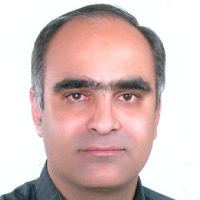Detection of Endoglucanase Gene in Cellulose Degrading Bacteria Screened from Forest Soils of Mazandaran, Iran
Cellulase enzymes are the second largest group of the enzymes with many industrial applications such as in textile industries, production of detergents, animal and human food processing, paper industries and biofuel production. Many microorganisms are capable for production cellulases, but only a small number of them produce significant amounts of this enzyme. The main sources of cellulases production are microorganisms including fungi and bacteria. Among the cellulose degrading aerobic and anaerobic bacteria, most of the studies have been done on Cellulomonas spp. and Clostridium spp., respectively. Also Bacillus spp. has been used for production of cellulase in a homologous manner. Expression of cellulases in some bacterial genera such as Bacillus, Pseudomonas, Ralstonia and Zymomonas, as well as some yeast species such as Saccharomyces cerevisiae and some fungal genera such as Aspergillus and Trichoderma has been reported too. Low levels of cellulase production has always been a major concern that leads to researches for finding of highly active microorganisms strains and employing biological technologies for identification of their enzyme coding genes suitable for probable transformation other organisms. The purpose of this study was the screening of the cellulose degrading bacteria in Mazandaran forest soils and detection of the enzyme coding gene in the isolate with the highest cellulase activity.
In order to isolate cellulase producing bacteria, soil samples were obtained from different regions of Mazandaran province forests including Nanoacla (A), Siaocla (B), Someesara (C), Namakabroud (D), Noor (E), Izadshahr (F), Sisanghan (G) and Sehezar (H) forests. Cellulase producing isolates were selected on carboxymethyl cellulose agar using congo red dye and the amount of their endoglucanase activities was measured by assessment of released glucose using dinitrosalicylic acid reagent. Each micromole of released glucose in 1 ml of enzyme solution per minute was considered as an enzyme activity unit (U/min.ml). Identification of bacterial species was performed by amplification and sequencing of a 1500 bp length fragment in 16S rDNA by using 1492R and 27F universal primers. Enzyme production by the selected isolates was also detected in different growth conditions. In order to investigate the effect of carbon source concentration, the amounts of 2-10 g/L of carboxymethyl cellulose were added to bacterial growth culture media. The effect of growth pH values in the range of 4 to 10 and sodium chloride at concentrations of 0 to 10 g/L were studied on endoglucanase production by the selected isolates in carboxymethyl cellulose media. Then the endoglucanase coding sequences in different strains of the bacterial sp. with the highest endoglucanase activity were investigated in Gen Bank and the primers were designed based on the obtained data for the gene amplification.
The results of heterotrophic bacteria counting showed the highest number at station B (Siakla forest). Subsequently, station A (Nanocla forest) and station G (Sisangan forest) had the highest number of heterotrophic bacteria, respectively. From the eight selected forest stations, eight top cellulase producing isolates were selected in carboxy methyl cellulose broth medium. The highest endoglucanase activities were belonged to the isolates A2 (1.92 U/min.ml), B2 (1.65 U/min.ml), and H3 (1.51 U/min.ml), respectively. The amplification of the 16SrRNA gene resulted in the formation of a 1500 bp band after electrophoresis in agarose gel electrophoresis. Sequencing results of the purified PCR products showed that B2 and A2 isolates belonged to Bacillus subtilis with 99% similarity. H3 isolate also belonged to Bacillus cereus with 99% similarity. In other studies in the forest soils of Iran for isolation of cellulase producing bacteria, Bacillus had been one of the most active cellulase enzyme producers. The present study showed that Noor forests are among the best places to isolate bacterial cellulase-producing strains. PCR amplification protocol was designed and the total sequence of endoglucanase with 1072 bp length was amplified. Molecular evaluation of endoglucanase gene in Bacillus subtilis (B2) showed 77% similarity to the endoglucanase gene (elgS) in Bacillus subtilis subsp. subtilis. Since the strain B2 had the highest production of endoglucanase among the isolated bacteria, it was attempted to enhance the production of the enzyme using this strain by changing the growth conditions. The isolate B2 was able to grow at different concentrations of carboxymethyl cellulose as a carbon source, but the highest endoglucanase activity was observed at the concentration of 8 g/L with a significant difference compared to other concentrations. The pH equal to 7 and the absence of sodium chloride salt was also led to significant highest endoglucanase production by this isolate.
The endoglucanase gene obtained in this study was reported for the first time with a new sequence. The enzyme showed more sustainable activity than other aerobic bacterial endoglucanases which had previously been studied. This sequence can be introduced into high expressional bacterial strains and used to produce high amounts of endoglucanase for bio-energy industries applications.
- حق عضویت دریافتی صرف حمایت از نشریات عضو و نگهداری، تکمیل و توسعه مگیران میشود.
- پرداخت حق اشتراک و دانلود مقالات اجازه بازنشر آن در سایر رسانههای چاپی و دیجیتال را به کاربر نمیدهد.



